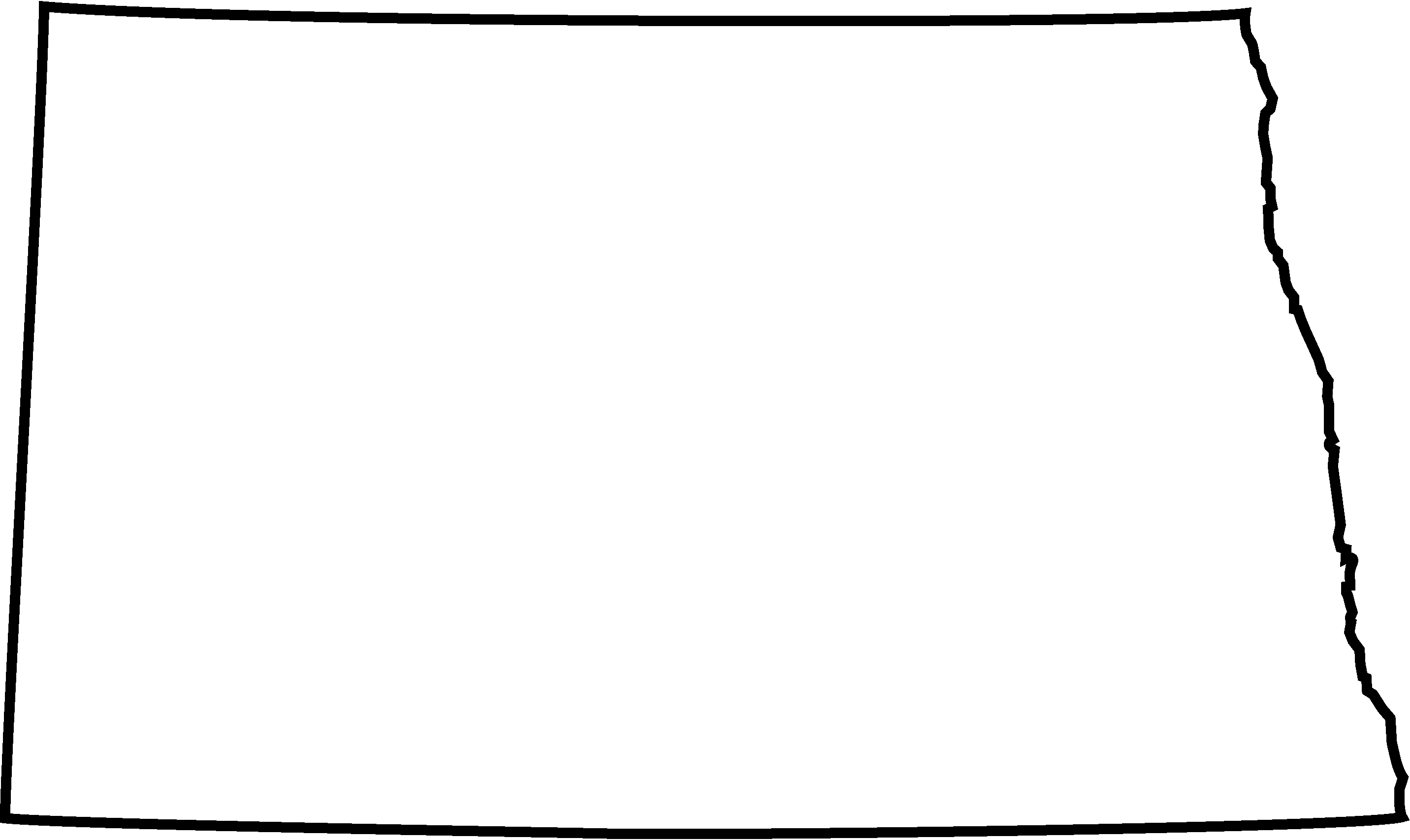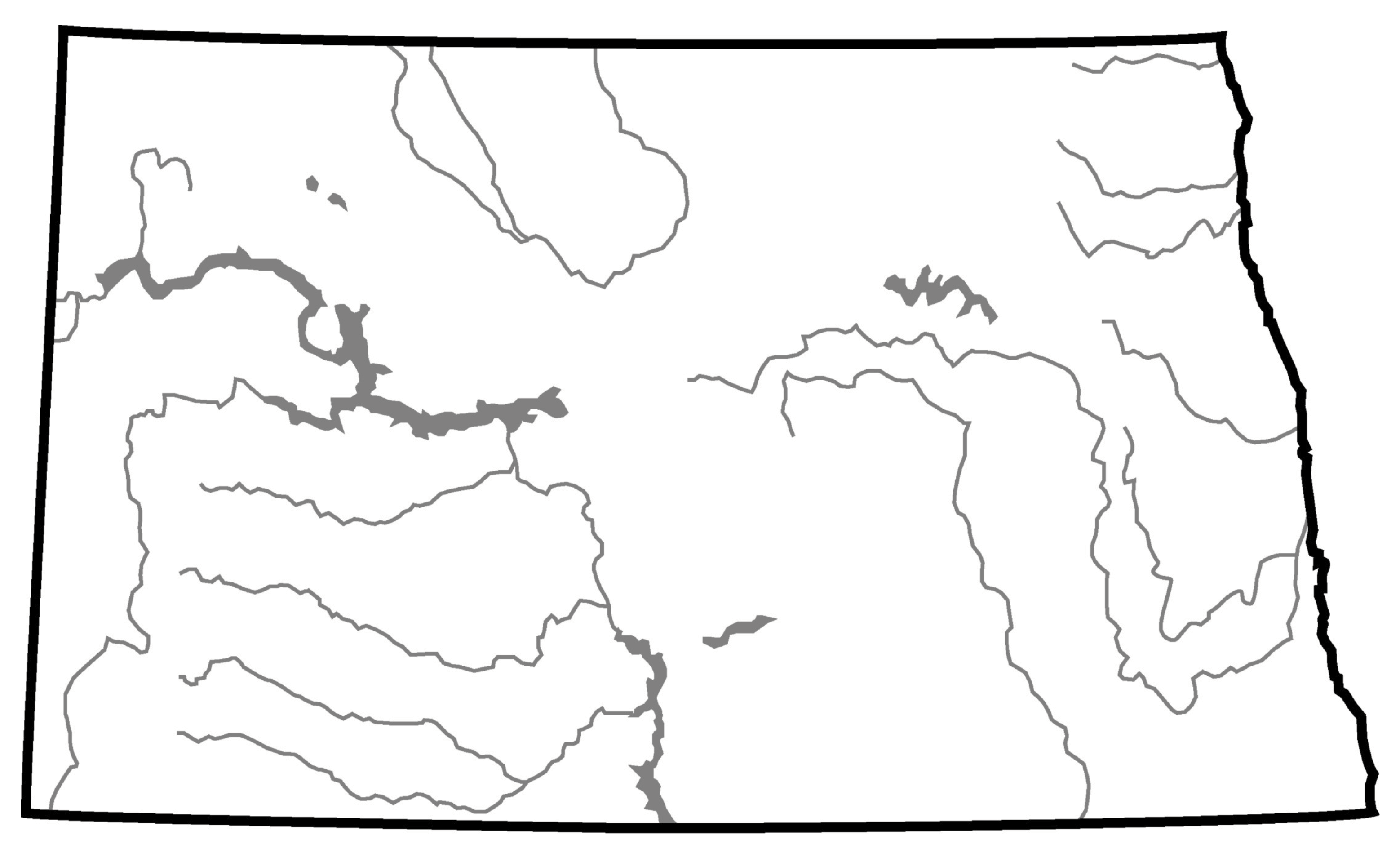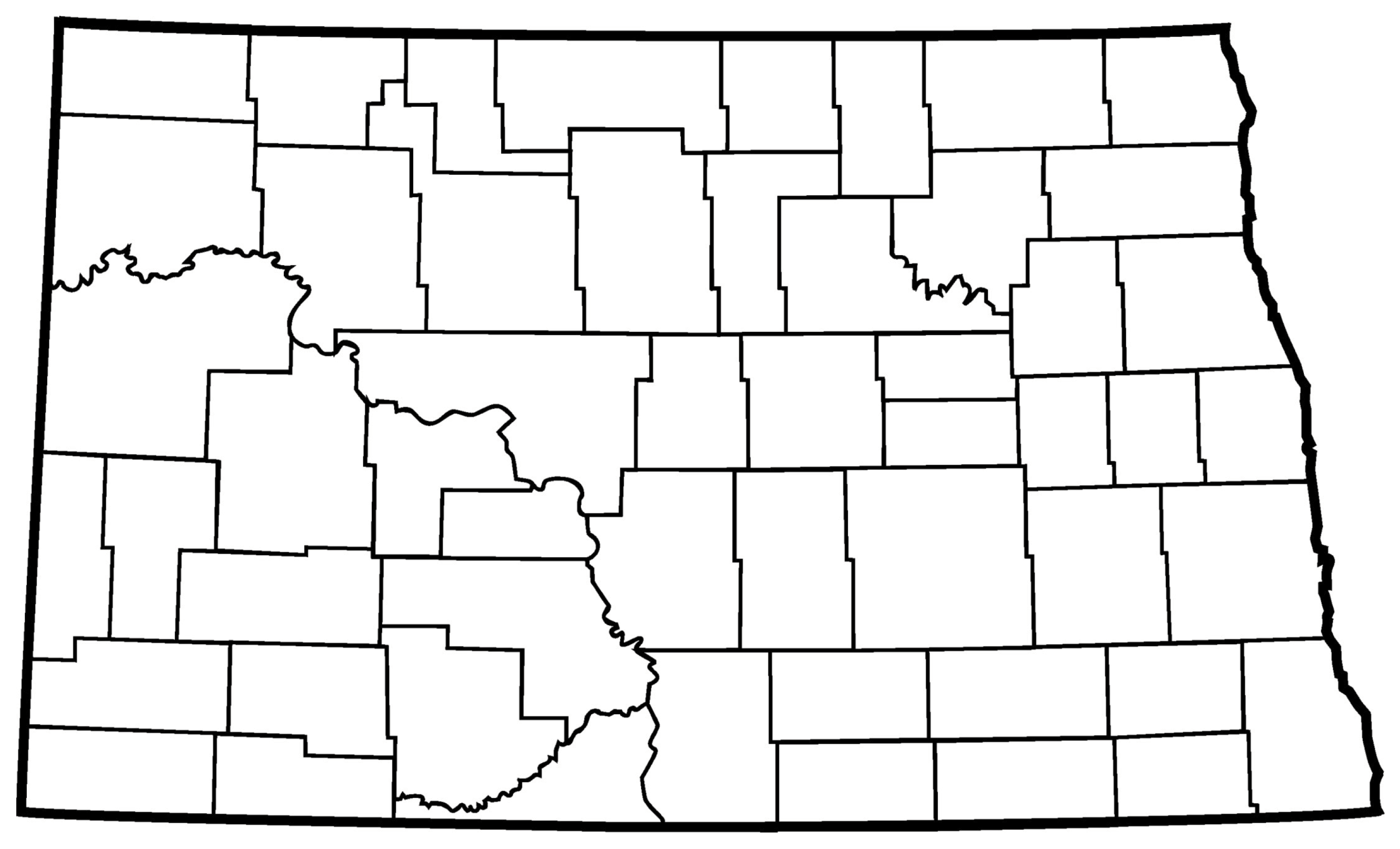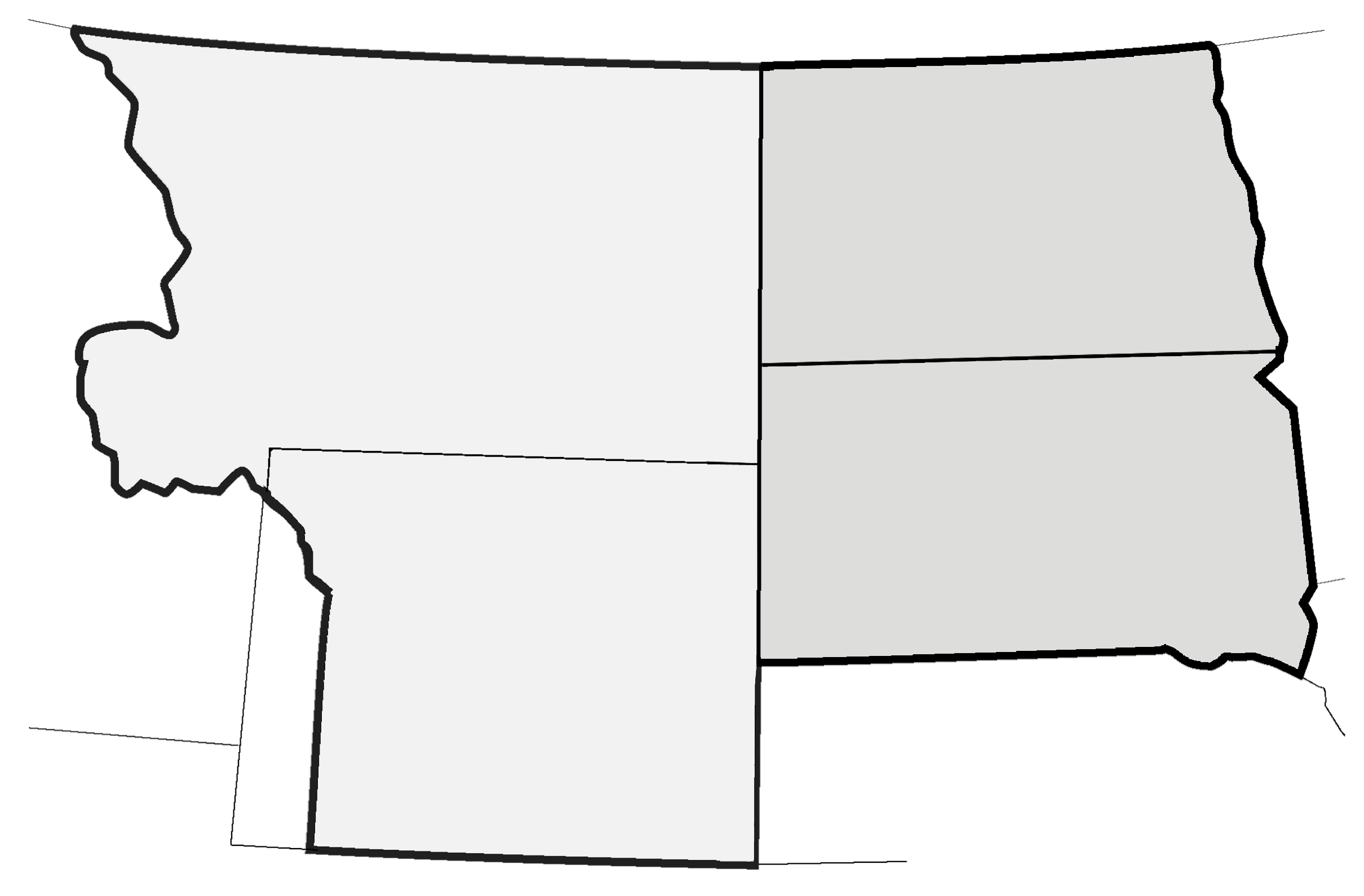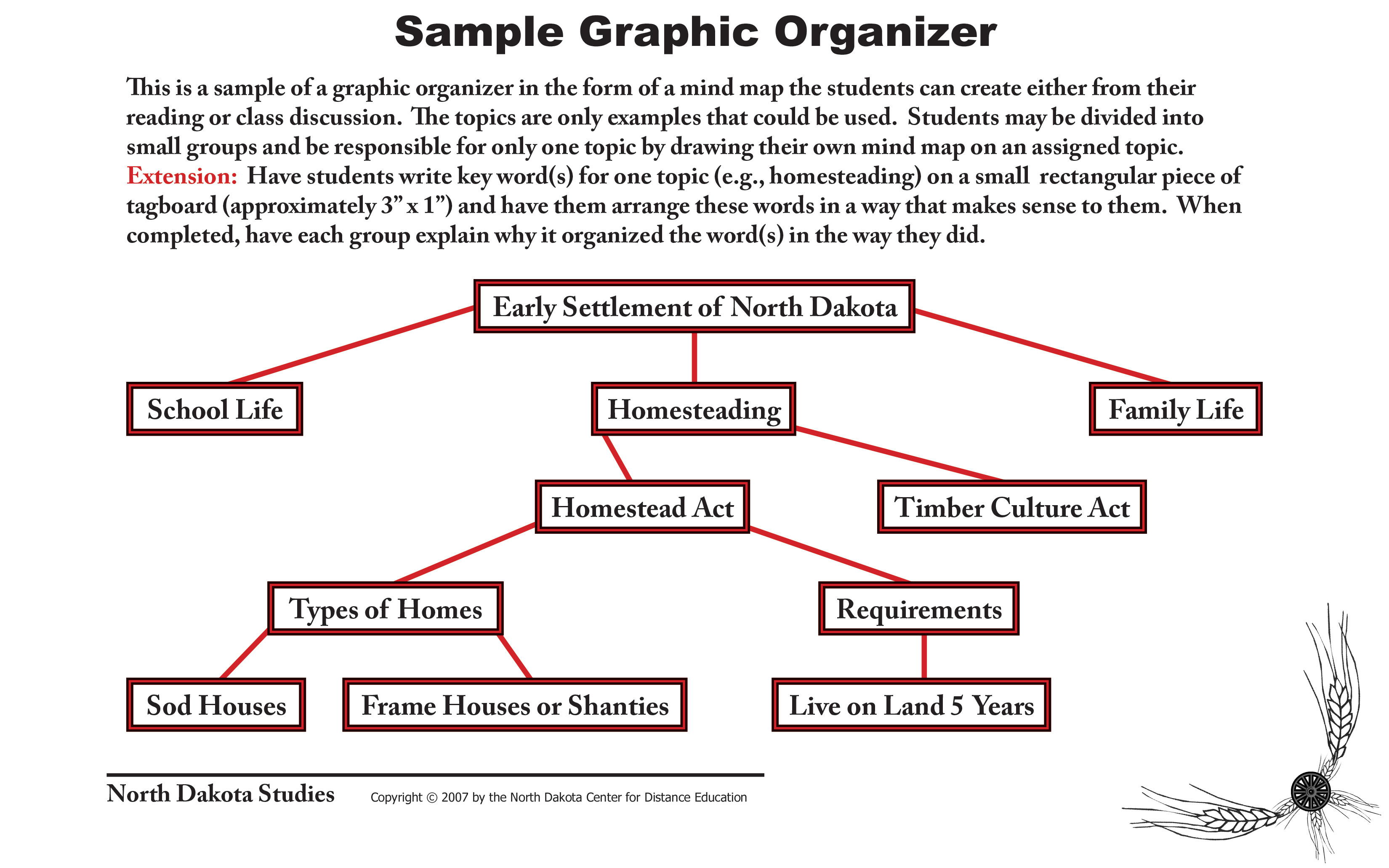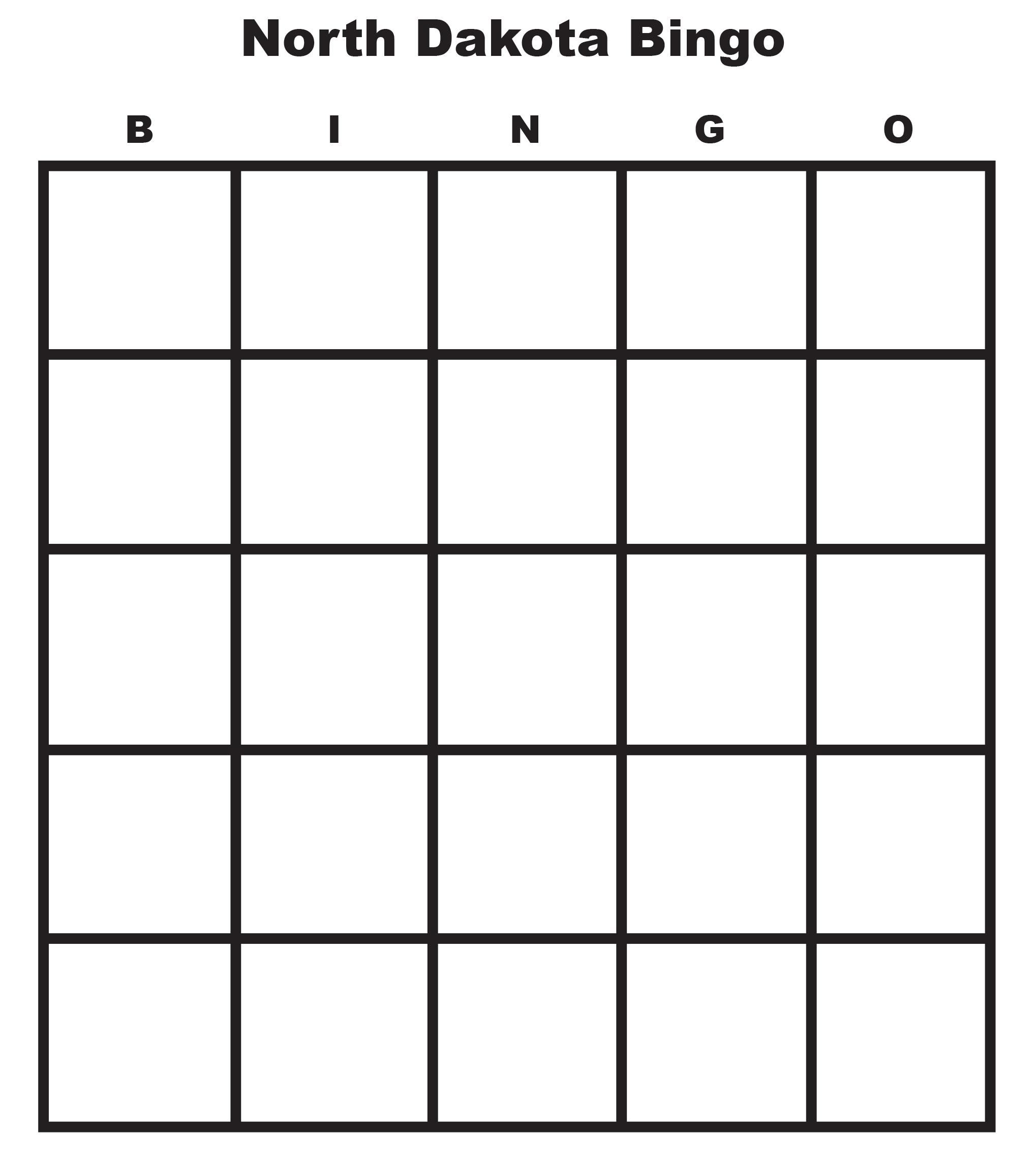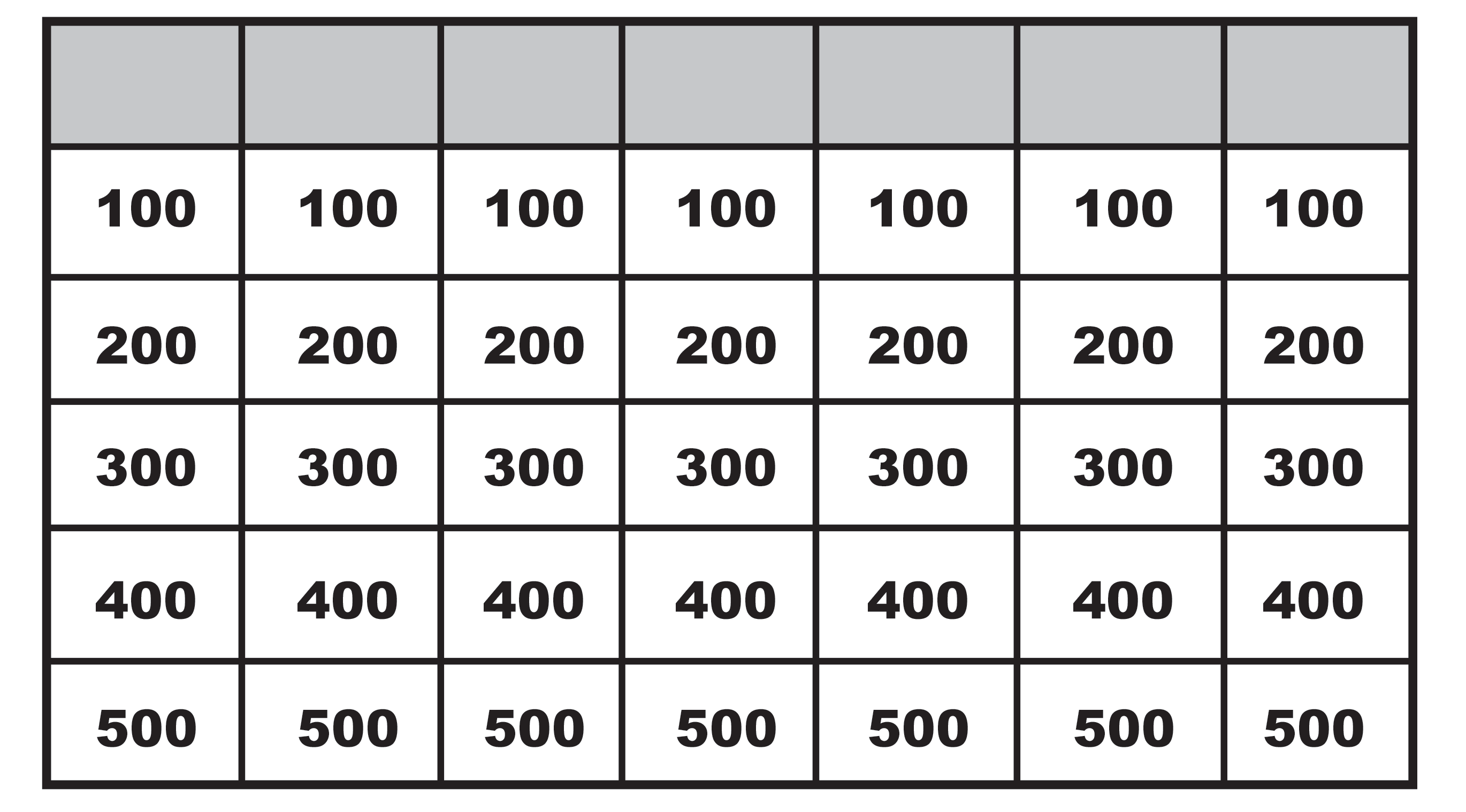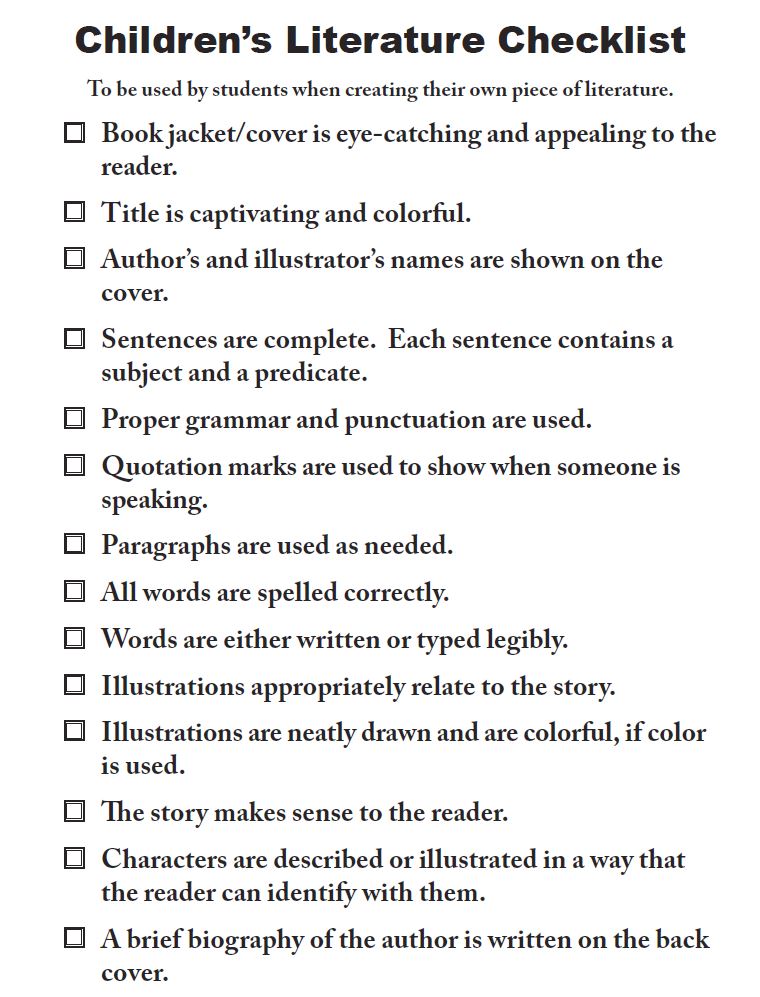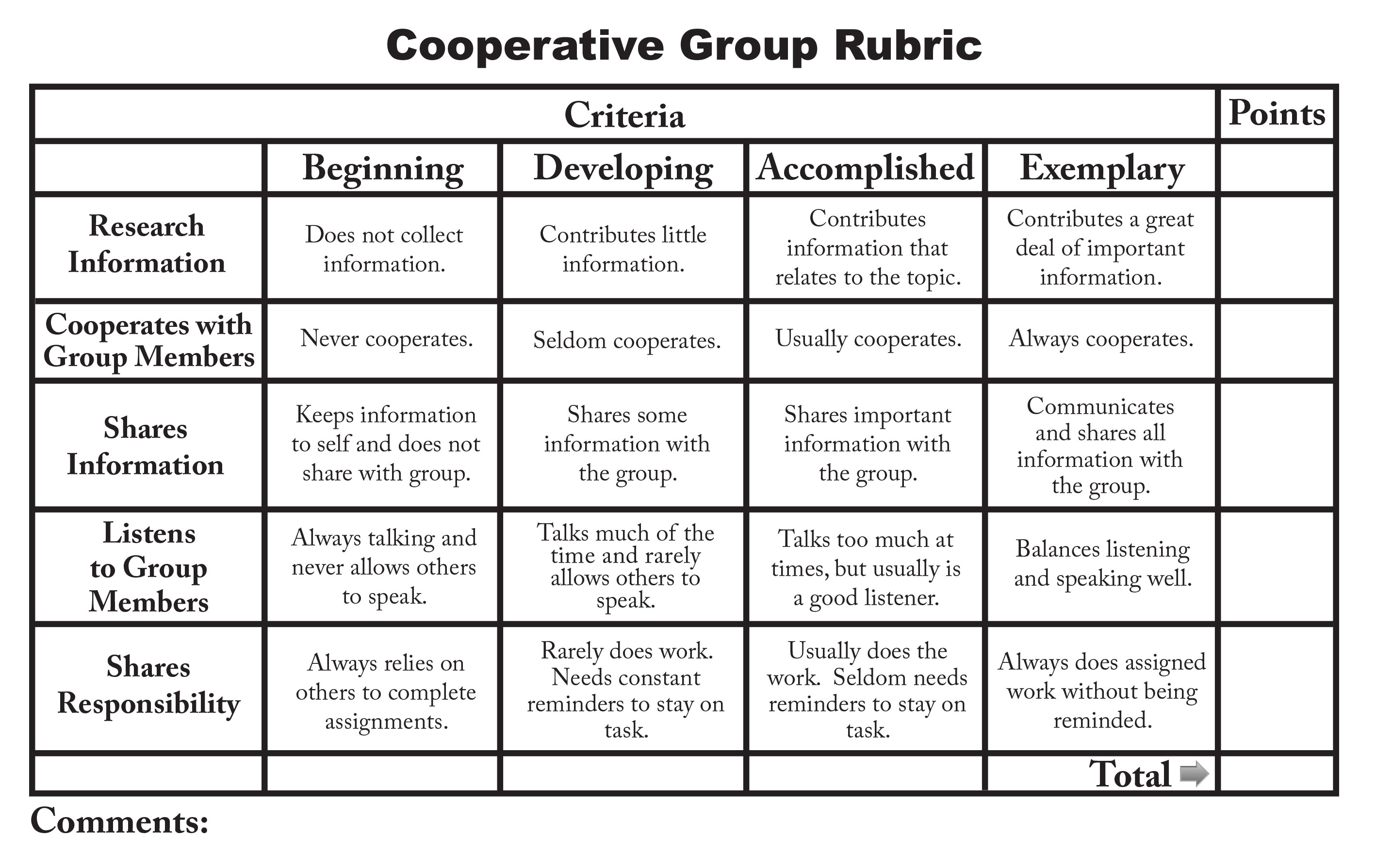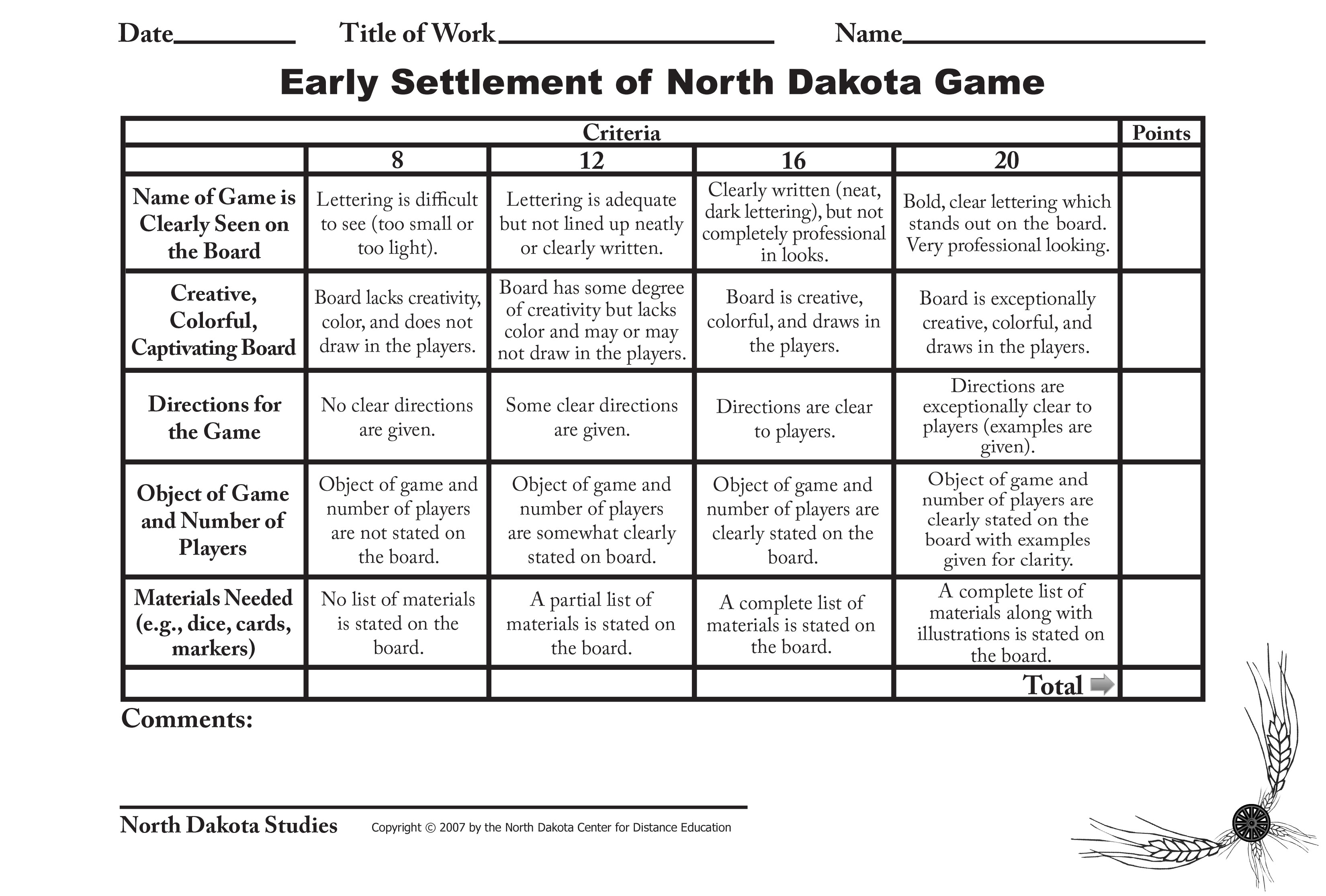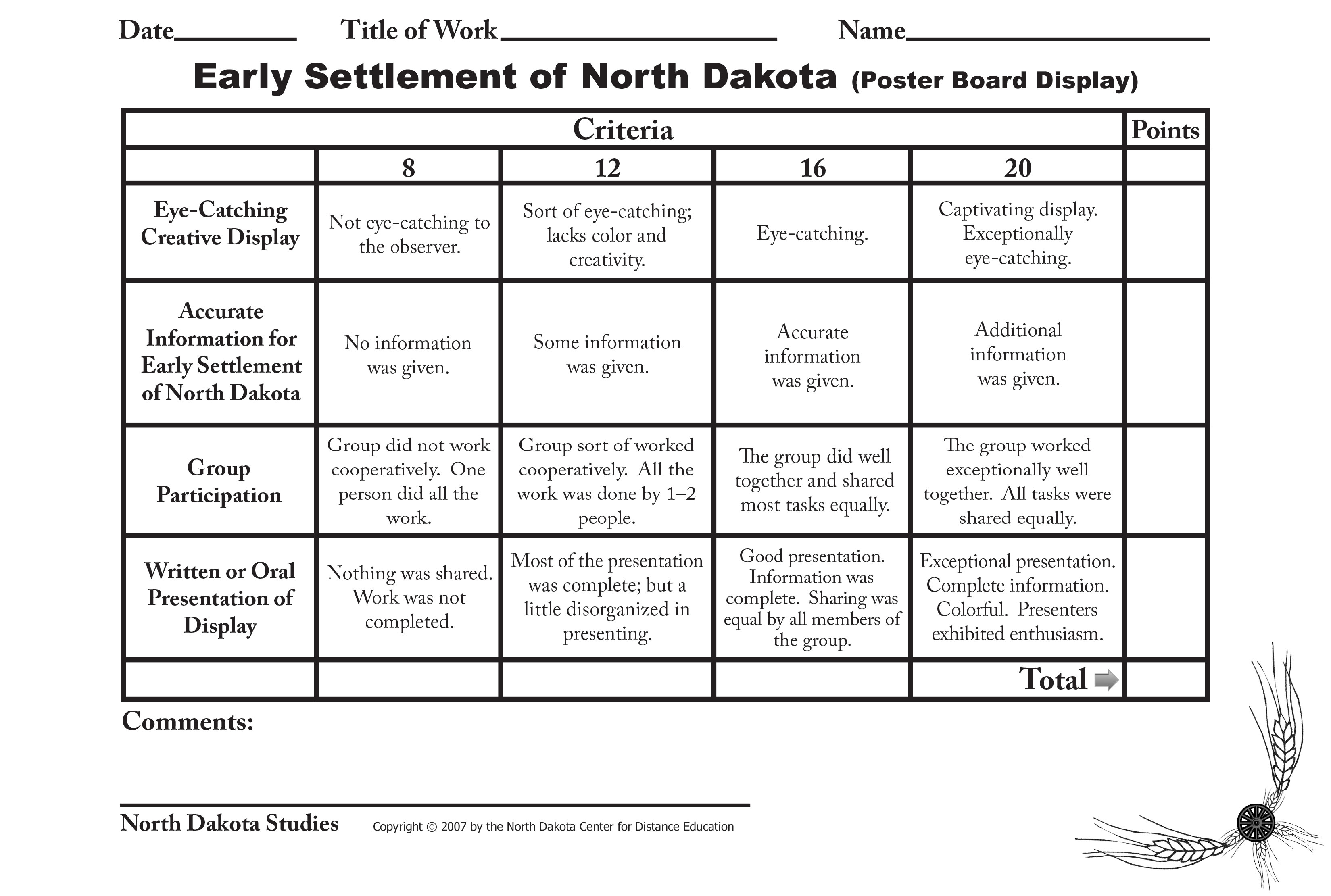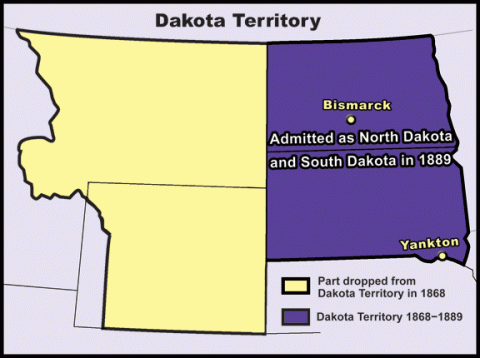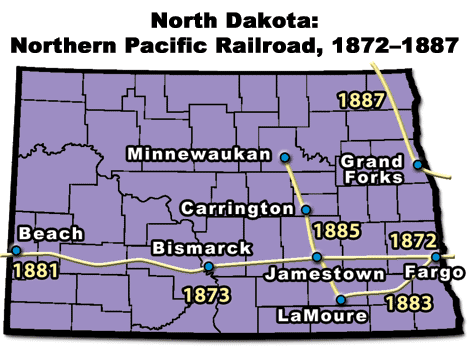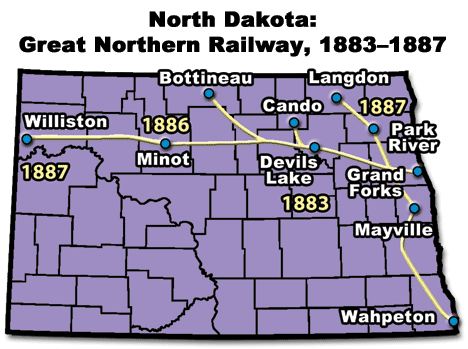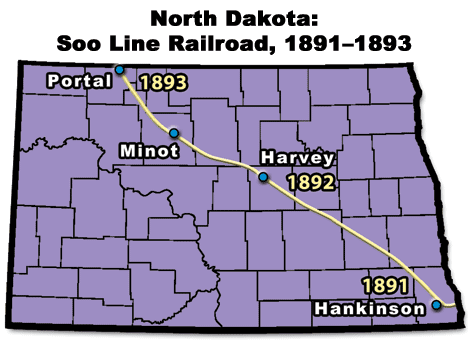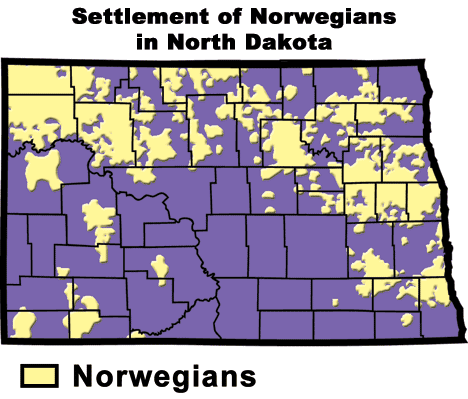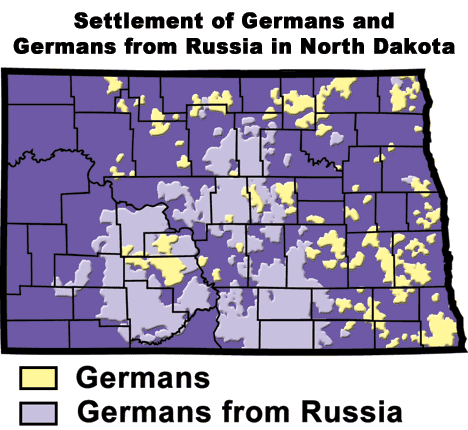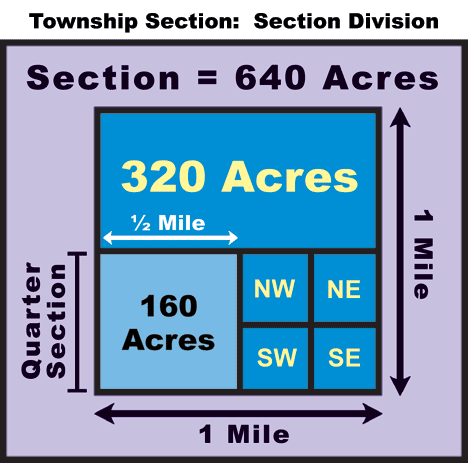Resources
Textbook
This 132-page unit presents the Early Settlement of North Dakota. Students are introduced to early forms of transportation, including the Red River cart, steamboats, stagecoaches, and the railroad. Students are also introduced to bonanza farms and cattle ranching in the Badlands, immigration, and pioneer life between 1870 and 1915.
Teacher Resource Guide
The purpose of this Teacher Resource Guide is to assist the teacher in teaching about the Early Settlement of North Dakota. It is intended to be interdisciplinary and to act as a guide to supplement other activities that may be used in the classroom. Review and discussion questions, vocabulary, and additional activities are included and available in print and CD-ROM versions of the Teacher Resource Guide for Early Settlement of North Dakota.
Books
Have students create an ABC Alphabet Book on the Early Settlement of North Dakota (e.g., A = A One-Room School, B = Bonanza Farms, C = Cornhusk Dolls, etc.). Illustrate each page and share it with another classroom or place it in the school library. Extension: Substitute with other topics such as the One-Room School, Entertainment on the Prairie, etc. Note: A similar activity using the alphabet is explained under “Small Groups.”
Children's Literature Checklist
Have students research and create a timeline in book form on the immigrants who came to North Dakota from various parts of the world.
Have students create an Early Settlement Glossary with illustrations and definitions that younger children in lower grades could understand. Have students share with others in the classroom or place it in the school library for use by other students.
Have students use vocabulary words to create a book or comic book of any part of the pioneer life in North Dakota. Include words, definitions, and illustrations.
Children's Literature Checklist
Have students research the challenges of settling on the northern plains of North Dakota and choose one to write about. Before writing, have students complete a T-Chart (link below) listing the early settlers’ challenges on one side and their solutions to them on the other side (e.g., challenge—fuel was scarce; solution—burned dried manure). Discuss findings in small groups and as an entire class before having each student write and illustrate a fictional story based on what was researched and discussed.
Brochures
Have students design and produce a 3-fold brochure on historical sites in North Dakota related to the early settlement era to be used for tourism.
Have students create a brochure advertising free land to any homesteader willing to settle and work the North Dakota prairie.
Creating
Accessing International Morse Code, have students create their own message in Morse code on something they have learned about early settlers in North Dakota. Have students exchange their messages with classmates to decode.
To check their work, have students access Morse code Converter and type in their message to see if their code is correct.
Have students make their own corn husk doll by following the directions at Teachers First
Have students build their own covered wagon. Directions are found at About.com
Have students complete the following activity on creating their own town.
You have been asked to create a town on paper because you think the railroad is coming and will bring people there. Draw a detailed map or create a replica of the town you envision. Include buildings, streets, etc. On paper, describe it in detail.
- What will be included in the town?
- How many people do you expect to move there? What are things that will need to be considered before inviting people to come and settle there?
- Will the town have the chance of becoming just a “paper town”?
- What could people do to ensure the town stays alive?
- Who will be a major part of the town? Explain.
Debate Ideas
Have students debate (link for formal debate guidelines below) whether young people of today could do what the pioneer children were expected to do. Pioneer children learned to take on responsibilities early in life. They began to help around the homestead as soon as they were old enough to follow instructions. Small children were expected to feed the chickens, gather the eggs, weed the vegetable garden, and collect buffalo or cow chips for fuel. As they grew older, they joined in the heavier work of picking rocks, plowing and planting, tending livestock, hauling water, pitching hay, building cabins and fences, hunting and trapping, babysitting, cooking, sewing, mending, washing, and cleaning. In fact, by the age of 10, young children were considered capable of taking on many adult responsibilities.
Have students debate which of the following buildings was the most important to the settlers when starting a new town: train depot, post office, livery stable, blacksmith shop, general store, school, or church.
Have students debate the topic of immigration. Almost all North Dakotans who immigrated here came from other parts of the world. They were enticed by free land and a chance to build something that would be their own. Do we give new immigrants from other countries the same chance of success that our ancestors had when they moved from their homelands and settled on the prairies of North Dakota?
Diorama
Using a box about the size of a shoe box, have students create a diorama of one of the following:
- A typical North Dakota family homestead, including a dugout, sod house, log cabin, or frame house, from the early settlement period of North Dakota;
- A typical small town in North Dakota during the early settlement years;
- A one-room schoolhouse, including the playground;
- A bonanza farm; or
- A large-scale ranching operation.
Drawing
The Homestead Act stamp was created in 1962, and its value was 4¢. Its site follows. Have students create their own commemorative stamp depicting any area of early settlement.
Have students create a political cartoon addressing the situation of the new immigrants who settled in North Dakota from an American Indian point of view.
Electronic Presentations
Have students create an iMovie, PowerPoint, movie, or other electronic media to illustrate and describe through text, animations, clip art, etc., the typical life of an early settler in North Dakota.
Games
Have students create an Early Settlement of North Dakota Board Game following the criteria of the rubric.
Have students play these games using questions from the text: BINGO, Jeopardy, Wheel of Fortune, Trivial Pursuit, etc. The site listed below is a wonderful site with templates, directions, and examples of Jeopardy, Who Wants To Be A Millionaire, or Hollywood Squares by using PowerPoint.) Suggested categories: Branches of Government; Robert's Rules of Order; Symbols of North Dakota; and Roles, Rights, and Responsibilities of Citizens.
Early Settlement of North Dakota BINGO—Have students fill in the blank boxes with early settlement words provided. Have a list of words created along with the definition, and cut them into small pieces. The caller will select a card, read the definition, and the students will place a marker on the word that matches the definition. When BINGO is called, the student must read each word and give the definition before it is counted. Note: This may be used as an assessment tool.
An entire segment of the Teacher Resource Guide is devoted to pioneer games. Have the students read the directions of the games and teach them to their classmates. Play them and compare and contrast the games of the pioneer days with today’s modern games by using either a T-Chart or a Venn Diagram.
Graphic Organizers
Have students select one or more topics to organize from the following: homesteading; family life; school life; types of entertainment at home, school, church, or community; etc. Topics could be organized by either writing them on paper or creating and placing words or phrases on small pieces of paper, cutting them out, and organizing them in such a manner that would make sense to the person(s) organizing them.
Have students research and produce a supply list of what early pioneers needed to get settled on the North Dakota prairie in the form of a graphic organizer. Divide the supply list into food, clothes, supplies for the house, farm equipment, or any other category deemed important to the survival of the pioneers. Under each category, give a brief explanation for including each item.
Have each student take an index card and write a vocabulary word in a box in the center. Draw lines to divide the card into four sections. Have the student complete each section of the card with the following: definition of word; synonyms or syllables; writing a sentence using the word in the correct context; and drawing a picture of it.
Have students research and create a flow chart of the steps needed to preserve through canning all the fruits, vegetables, or meat the pioneers grew or raised.
Have students create a flow chart of the steps taken by early settlers to plant and harvest a crop.
Map Skills
Have students draw a map showing the migrating paths for at least one ethnic group who settled in North Dakota.
Have students locate on a North Dakota map the sites of each of the towns or cities settled as a result of the railroad coming to North Dakota. Extension: Research a particular town’s history and write a brief report on it to share.
Have students map out a typical sod house measuring 8 feet by 10 feet in a large area (e.g., gym, playground) before transferring it onto paper. Using a scale of distance and a map legend, have students include on the map what furniture was in each of these homes. As a homework assignment, have students measure and map their bedrooms at home, including every piece of furniture in their rooms. Extension: Compare and contrast each set of maps by using a Venn Diagram or a T-Chart and discuss in small groups or as an entire group.
Games of Pioneer Children
There were several games played by pioneer children that are still played today in homes, schools, and on the playground. Hide-and-Seek, baseball, jump rope, tag, and string games are just a few. Word games were played both at home and at school, because these games helped the children learn language skills. Games involving guessing were also popular, because these games were good brain exercises and helped students develop their thinking skills.
Directions are provided below for several of the games that were played during the early settlement era and are still played today. There are many more that are not covered; therefore, research more games pioneer children played. In addition, find out what types of toys the children of that time period played with to occupy any free time they may have had.
Pioneer Children Games PDF
Several web sites give directions for games played by pioneer children, along with the types of toys that were played with for entertainment.
Poetry
Have students create poetry corresponding to the North Dakota Studies unit they are studying:
Couplets (two-line stanza that rhymes).
Triplets (three-line poems). A triplet may be written in the shape of a triangle and can be read by starting at any corner.
- Patterns include ABB (two of the lines rhyme)
- AAA (all three lines rhyme)
- ABC (no lines rhyme)
Haiku
- Line 1—five syllables
- Line 2—seven syllables
- Line 3—five syllables
Cinquain
- Line 1—one word (title)
- Line 2—two words (describe the title)
- Line 3—three words (describe an action)
- Line 4—four words (describe a feeling)
- Line 5—one word (refer back to the title)
Diamanté (Diamond)
- Line 1—one noun (subject #1)
- Line 2—two adjectives (describing subject #1)
- Line 3—three participles (ending in –ing, telling about subject)
- Line 4—four nouns (first two related to subject #1, second two related to subject #2)
- Line 5—three participles (about subject #2)
- Line 6—two adjectives (describing subject #2)
- Line 7—one noun (subject #2)
ABC Poetry (Start with A and go through the alphabet writing a word for each letter. You may make several sentences, but the information should be about North Dakota.)
Acrostic Poems (The first letters of the line spell out a word that has something to do with the poem.)
Lanterns (Japanese poem that is written in the shape of a Japanese lantern).
- Line 1—one syllable
- Line 2—two syllables
- Line 3—three syllables
- Line 4—four syllables
- Line 5—one syllable
Posters
Have students design a poster that advertises the prairies of North Dakota so people will move, claim a homestead, and settle.
Have students create a poster that encourages the settlers to send their children to school.
Have students create a poster showing an outline of a classroom showing the location of each desk. Using colors to create a legend, indicate different ancestries in the class by coloring each desk to indicate the dominant ancestry of each student. Extension: Discuss in small groups or as an entire group the strength of multiple ethnic groups in a town or region and their impact on each other.
Have students create a poster that encourages workers to come and work on a large-scale bonanza farm in the Red River Valley of North Dakota.
Research Activities
- Have students complete the following Think, Pair, Share Activity on pioneer life during the Early Settlement of North Dakota. (This technique may be used for any topic.)
- Immigrants left their homes in Europe or other continents to move to the prairies of North Dakota where they either knew a few relatives or friends who came with them or no one at all. Have each student think individually what traits or abilities would have been needed to be able to leave their home and country to move to a place they knew little about. Working in pairs, have students share their ideas and thoughts with each other. Examples may include: bravery, vision, responsibility, courage, ability to persevere, ability to adapt, health, etc.
- Have students think of and write down examples from their own lives in which they have recognized some or all of these characteristics in themselves.
- Students may then share their thoughts or examples from their own experiences with a partner on one or all of the traits or abilities by writing down their ideas on the board and/or poster paper for the entire class to see and to discuss.
- Assign individuals or small groups to research and demonstrate their knowledge of the Early Settlement of North Dakota through one of the formats listed below. Research one of the following assignments in depth, and share it with others choosing one of the following methods:
- Homesteaders had to find their own entertainment to occupy any free time they might have had. Research the types of entertainment people engaged in while living on the prairies of North Dakota. Include home, church, and community functions.
- Immigrant trains brought thousands of people to North Dakota from other countries. Research the immigrant trains, finding out as much information as you can to share with others in the class.
- Agriculture, or farming, was done very differently during the early settlement era as compared to modern farming. Research the types of machinery used, the farming techniques, and a typical workday of a farmer during early settlement and compare with today’s farmers by demonstrating knowledge of the similarities and differences of each era.
- The Homestead Act stated that each homesteader had to live in a dwelling at least 8 feet by 10 feet in size. Was this a realistic size for a family? Debate the pros and cons of this size of home.
- Several prominent individuals contributed to the success of North Dakota in its early years. Choose someone of interest (e.g., founder of a North Dakota town, etc.), research him/her, and share.
- Four main types of homes were built and lived in by early settlers during the early settlement era of North Dakota (i.e., frame homes or shanties, log cabins, dugouts, sod houses). Research one of these in depth and share it with others choosing one of the following methods: Report (written or oral), Radio Broadcast (tape player), Student-generated bulletin board on topic, Slide presentation (electronic or created on left-over laminated sheets and placed on an overhead projector), Student-generated tests of the material covered, PowerPoint or iMovie, News report, Oral history of an event, Television Report (PowerPoint), Interview, Demonstration, Dramatization of a legend and myth, Commercial, Jump Rope Rhyme/Poetry, Play (puppet or real life parts), Role Play, Simulation, Skit, Song writing to fit a topic, TV talk show, Weather Report, Tongue Twister, Map, Mobile, Brochure, Crossword Puzzle, Illustrated and written book on topic, Scrapbook, Timeline, Cartoon, Model, or Diorama. Be Creative! Think of other ways the student can demonstrate the knowledge of his/her topic!
Small Groups
Have students research, write, and perform a short play about some part of pioneer life on the prairie (e.g., home, school, community, etc.). Puppetry could also be used. Divide the students into small groups and have them choose an area of pioneer life that interests them.
Have students create their own traveling exhibit of North Dakota trying to entice people to come and settle on the prairies of North Dakota.
In groups of two to four people, have students create a T-Chart (link below) with each letter of the alphabet placed in the left-hand column, write a summarizing statement in the right-hand column next to each letter of the alphabet in the left-hand column.
- (e.g., A = Early settlers shared many types of Activities and games with family and friends to entertain themselves. B = When children played Baseball, they made the ball from tightly-wound twine.)
- T - Chart
In small groups of two to three people, have students make up a chant or song to show their knowledge of a vocabulary word before sharing with the class.
Time Capsule
As a class, have students create a time capsule that describes the life of a fourth grader (any grade level would work) today by answering the following questions:
- What do you enjoy doing the most?
- What are your goals and dreams?
Have students place their journals in the time capsule with other artifacts that are important to them and their classmates. Have them write a letter explaining why they included these artifacts and put it in the capsule. Have them leave a letter with the principal of their school outlining when the capsule should be opened. It should remain unopened for at least 20 years.
Timelines
Have students (individually, pairs, or small groups) write a significant event on an index card relating to the Early Settlement of North Dakota. Have them create a visual timeline by having them take turns placing the cards in the correct sequential order. Students creating the timeline should create an answer sheet to check for understanding by the students participating. Extension: Have students illustrate each significant event in addition to writing it.
Venn Diagrams
Using a two-circled Venn Diagram, have students complete one or all of the following:
- Show the differences and similarities of the foods eaten by early settlers and the foods we eat today.
- Compare and contrast both land and water travel today with that of the early settlement period of North Dakota.
- Compare and contrast farming during the early settlement period with today. Research the machinery, methods, and tools used for each time period.
- Write down the types of games and toys pioneer children played with and compare and contrast them with what children of today play with.
- Compare and contrast going to school during the years of early settlement with going to school today.
- Compare and contrast the role of women during pioneer times with women of today.
- Compare and contrast bonanza farming and huge cattle ranching during the settlement of North Dakota.
Vocabulary/Spelling
Use the Early Settlement of North Dakota vocabulary words as spelling words.
Suggestions for use:
- Have students divide a sheet of paper by folding it into thirds. In the first column, have them write a vocabulary word followed by any information about the word in the second column and a memory clue (e.g., drawing, symbol) in the third column to aid them in remembering the word.
- Have students write vocabulary or spelling words in Morse code. To check their work, access the following site and type in their word(s) for an instant read-out in Morse code.
Writing Activities
Have students read the following scenario and write a response to it by using the questions as guidelines. Note: This letter could be put in book form with illustrations included.
Pretend you are a pioneer who has just landed on a new planet. Your expedition is the first to find and explore this new place. You are one of the explorers who will help build the first colony of settlers. Write a letter home to your family describing this new place. Include details about the landscape you see, and describe how you and the other members of your expedition feel in this new place. Think about this place as your new home. NOTE: This letter should give your family a sense of where and how you will be living in your new environment.
- What opportunities exist for you here?
- Do you want your family to join you?
- What kinds of materials exist for you to build your homes?
- What kinds of food will you grow and eat?
- What are the native animals?
- Can they be used for work or food?
Have students research and write about stagecoaches that were used for travel in North Dakota during the time of early settlement.
Have each student keep a journal of his/her activities, dreams, goals, and frustrations. Encourage them to write in their journal at least two times a week detailing what their average day is like. Note: Their journals should describe their experiences so that if someone who did not know them were to read the journal 100 years from now, the person would begin to understand what their life was like.
- What do they do in their free time?
- What are their favorite subjects in school?
- What kind of music do they listen to?
- kinds of chores do they do around the house?
- What are the latest fashions for their age group?
Have each student imagine he/she is an early pioneer just coming to North Dakota by railroad to stake a claim on a small piece of land. Have them make a list of all the food, clothing, and other goods they would bring along to begin their new life. Give a reason for each item they choose. This writing activity would also lend itself well to a small group activity.
Have students imagine it is the year 2289 and they go back in time 400 years and meet a pioneer family. But there is a problem, as this pioneer family does not believe they are from the future! Have the students write how they would persuade this family that they are really from the future. What will they tell the family to persuade them? Write what they see, and describe what it is like living 400 years in the past.
Have students research their family tree, or if there is difficulty in doing this, have students work in small groups and choose one person’s ancestry to research and share.
These activities are meant to assist teachers in presenting various topics from the Early Settlement of North Dakota textbook. Reproduction for North Dakota classroom use is allowed.
Maps
Other Assessments
Rubics
Bonanza Farming
Bonanza Farming in North Dakota
Ethnic Groups
Homesteading
Homesteading-North Dakota Pioneers
OurStory is an interactive site where students are asked to choose a spot and build their own sod house.
Pioneer Trails Regional Museum shows actual photos of the building of a sod house in 2006. It shows the process step by step, so the viewers can see exactly how a sod house was constructed.
Morse Code
Morse Code Translator allows the user to type in any message and the translator automatically writes it in Morse code. Or the user can type Morse code into the top box using “.” for a dot and “-” or “_” for a dash. Letters are separated by spaces and words by “/” or “|”. When the user hits the “Translate” button, the program will translate the Morse code into plain text. If it cannot translate a letter it will place a “?” in the output. This site is great for learning Morse code. Extension: Spelling words could also be practiced by writing them in Morse code and exchanging them with a partner.
Pioneer Life
Transportation
Women on the Prairie
Literature for Classroom Use
| Authors | Titles |
| Bedard, M. | The Divide ISBN: 0-385-32124-4 |
| Bouchard, D. | If You’re not from the prairie… ISBN: 0-689-82035-6 |
| Prairie Born ISBN: 1-55143-092-4 |
|
| Chambers, C.E. | Frontier Dream: Life on the Great Plains ISBN: 0-8167-6333-X |
| Freedman, R. | Children of the Wild West ISBN: 0-395-54785-7 |
| Graves, K. A. | Going to School in Pioneer Times ISBN: 0-7368-0804-3 |
| Harvey, B. | My Prairie Christmas ISBN: 0-8234-0827-2 |
| My Prairie Year: Based on the Diary of Elenore Plaisted ISBN: 0-8234-0604-0 |
|
| Kalman, B. | A One-Room School ISBN: 0-86505-517-3 |
| King, D.C. | Wild West Day ISBN: 0-471-23919-4 |
| Knight, A.S. | The Way West: Journal of a Pioneer Woman ISBN: 0-671-72375-8 |
| Levine, E. | …If Your Name Was Changed at Ellis Island ISBN: 0-590-46134-6 |
| Love, D.A. | Dakota Spring ISBN: 0-440-91306-3 |
| MacLachlan, P. | Sarah, Plain and Tall ISBN: 0-440-84000-7 |
| Moss, M. | Rachel’s Journal ISBN: 0-439-09870-X |
| Turner, A. | Dakota Dugout ISBN: 0-689-71296-0 |
| Van Leeuwen, J. | Going West ISBN: 0-8037-1027-5 |
| Williams, D. | Grandma Essie’s Covered Wagon ISBN: 0-679-80253-3 |
| Plains Humanities Alliance gives an annotated bibliography of Great Books of the Great Plains: North Dakota, compiled by David Martinson, English Lecturer, North Dakota State University, and Thomas Isern, History Professor, North Dakota State University. | |
| SHS Museum Store is from the State Historical Society, and it gives a list of children’s books found in their museum store. | |
| Amazon gives a list of almost 200,000 children’s literature books with the word “pioneer” in the title. There are many useful books included for the topic of early settlement. | |
